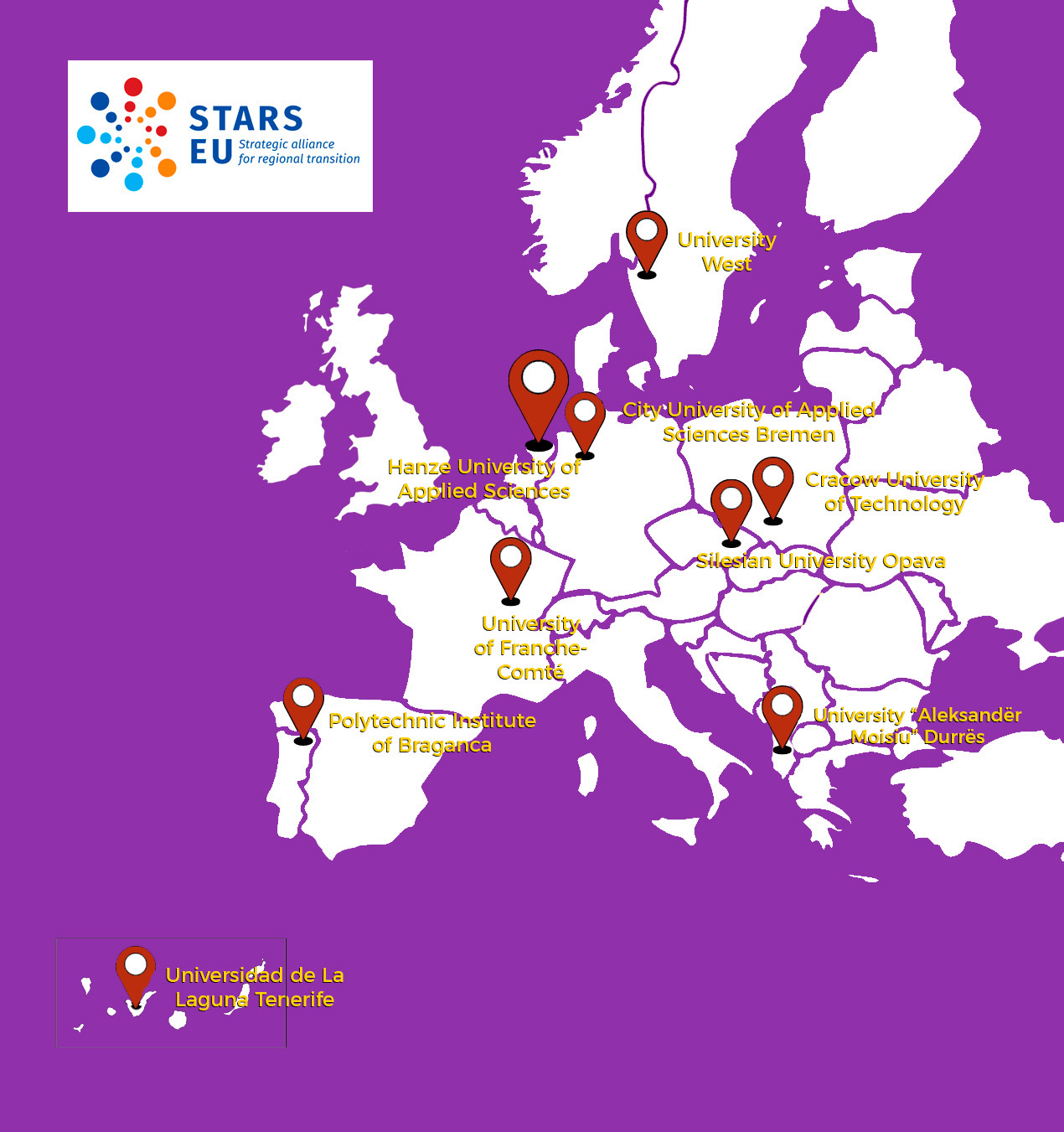
The Strategic Alliance for Regional Transition (STARS EU) is an alliance between nine complementary European universities to establish channels of collaboration in initiatives of different types, seeking to promote the exchange of ideas, people and innovation in both research and teaching
Innovation in the classic functions of the university is necessary in the face of a future of unprecedented social change. Preparing future generations for increasingly automated, digitalised and fluid labour markets implies reforming both educational models (through international exchange, challenge-based education, micro-credentials and other strategies) and research models, with collaboration as the driving force.
Who are involved

Thematic Interest Groups
STARS EU has identified areas on which the alliance should focus its teaching and research activities, known as Thematic Interest Groups (TIGs). These priority areas are:
- Circular economy
- Digital transition
- Energy transition
- Healthy ageing
- Entrepreneurship and innovation
- Arts and creative industries
- Living Spaces
- Inclusion and Social Justice
- Sustainable Industry
Each of these TIGs has a lead and a co-lead institution. The University of La Laguna leads the Energy Transition group and co-leads the Healthy Ageing group.
European University
The STARS EU alliance applied to the European Commission’s call to become a European University. It was successful in July 2023, obtaining funding of almost €13 million to develop a four-year project to become a scientific and educational institution that interconnects the nine partner universities through teaching, research and regional development activities. STARS EU is thus one of 65 partnerships under this call, involving 570 higher education institutions from 35 countries.
With that vision, STARS EU aims to take inter-institutional cooperation to the next level, testing various innovative and structural models across the four missions of higher education institutions: teaching, research, innovation and service to society. It also seeks to create an open campus where students, faculty, researchers, staff and other actors collaborate physically and virtually.
Noticias
19 May 2025 - 13:19 UTC
Alumnado de la ULL finaliza en Portugal un curso intensivo de la alianza STARS EU sobre mercados locales
14 May 2025 - 13:16 UTC
La ULL participa en un encuentro internacional sobre cooperación académica de la alianza STARS EU
21 Mar 2025 - 13:55 UTC
El rector de la ULL, en la cita de STARS EU de Albania: «La universidad mejora la competitividad de país pero debe ‘salir del edificio’”
19 Mar 2025 - 12:46 UTC
La Universidad de La Laguna registra un récord de solicitudes de movilidades Erasmus+ para el curso 2025/26
17 Mar 2025 - 12:52 UTC
La ULL participa en un proyecto de la alianza STARS EU centrado en la asistencia sanitaria a pacientes mayores con peor salud